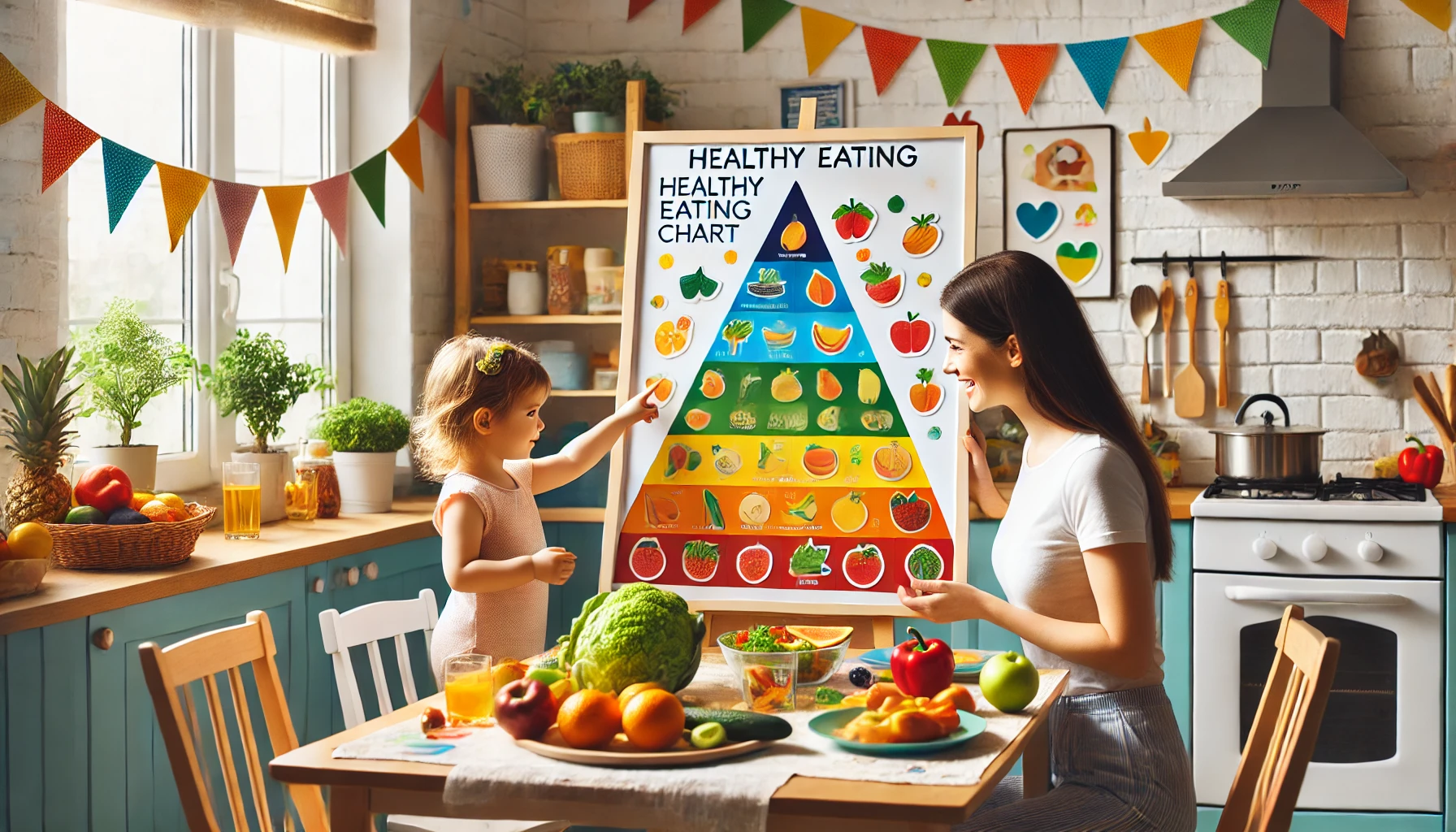How to Teach Young Children About Healthy Eating Habits
Teaching children about healthy eating doesn’t have to be complicated—it can be fun, colorful, and engaging. By introducing good food habits early in life, children learn to make nutritious choices, appreciate the value of different foods, and build a positive relationship with eating. With storytelling, hands-on experiences, and consistency, these lessons can last a lifetime.
Why Teaching Healthy Eating Habits Matters
- Supports physical growth and development
- Boosts energy and concentration
- Reduces picky eating and food anxiety
- Fosters independence and smart decision-making
- Encourages long-term health and wellness
1. Teach the Basics of Food Groups
Introduce the concept of balanced meals in simple terms.
Activity Idea:
- Say: “Fruits and vegetables help keep us strong and healthy.”
- Use colorful images or a “My Healthy Plate” poster.
- Let your child sort toy or paper foods into categories: fruits, veggies, proteins, grains, dairy.
What Kids Learn:
- That different foods help different parts of the body.
- A basic understanding of nutrition.
- Vocabulary and recognition of healthy choices.
2. Involve Kids in Meal Planning and Preparation
Ownership increases interest.
Activity Idea:
- Let your child help plan a meal: “What vegetable should we have with dinner?”
- Assign kid-friendly tasks: washing produce, stirring, assembling snacks.
- Talk about each ingredient: “This tomato helps your heart!”
What Kids Learn:
- Practical kitchen skills.
- Pride in contributing to meals.
- Appreciation for healthy ingredients.
3. Make Healthy Foods Fun and Appealing
Presentation matters.
Activity Idea:
- Use cookie cutters to shape fruits and sandwiches.
- Make colorful snack plates with “rainbow” veggies.
- Name foods playfully: “Superpower carrots” or “energy-packed bananas.”
What Kids Learn:
- That healthy foods can be fun and exciting.
- Openness to trying new things.
- Engagement with mealtimes.
4. Create a Positive Mealtime Environment
Make meals about connection, not pressure.
Activity Idea:
- Eat together at the table without screens.
- Talk about the day instead of focusing only on food.
- Avoid forcing bites: offer and model instead.
What Kids Learn:
- That eating is enjoyable and social.
- How to listen to hunger and fullness cues.
- Low-stress mealtime habits.
5. Read Books About Healthy Eating
Stories make lessons memorable.
Activity Idea:
- Read books like I Will Never Not Ever Eat a Tomato by Lauren Child or Eating the Alphabet by Lois Ehlert.
- After reading, ask: “What’s your favorite healthy food?”
- Let your child draw their own plate of healthy foods.
What Kids Learn:
- Emotional and visual connections to good food.
- New vocabulary and food curiosity.
- Relatable situations about trying new foods.
6. Introduce Healthy Snacks
Teach that not all snacks come in a package.
Activity Idea:
- Offer choices like apple slices, yogurt, or nuts.
- Make DIY snacks together: fruit skewers, veggie cups with hummus, or trail mix.
- Avoid labeling foods as “bad,” but talk about “everyday” vs. “sometimes” foods.
What Kids Learn:
- Smart snack choices.
- That whole foods are satisfying.
- Moderation and balance.
7. Celebrate Healthy Habits
Reinforcement encourages consistency.
Activity Idea:
- Use a “Healthy Choice” chart to track trying new foods or drinking water.
- Give praise: “You tried a new veggie today—that’s amazing!”
- Reflect: “What healthy choice did you make today?”
What Kids Learn:
- Pride in healthy eating.
- Motivation to keep exploring new options.
- Habit-building through encouragement.
8. Be a Role Model
Your eating habits matter most.
Activity Idea:
- Let your child see you eating fruits, veggies, and balanced meals.
- Try new foods together: “Let’s both taste this green bean!”
- Talk positively about food: “This meal is giving me lots of energy.”
What Kids Learn:
- That healthy eating is normal and enjoyable.
- That grown-ups make nutritious choices too.
- Mimicry of positive behaviors.
Final Thoughts
Teaching young children about healthy eating helps them build a strong foundation for life. With fun activities, shared meals, and patient modeling, kids learn that food can be both nourishing and exciting. The goal isn’t perfection—it’s building joyful, confident eaters who love to care for their bodies.
